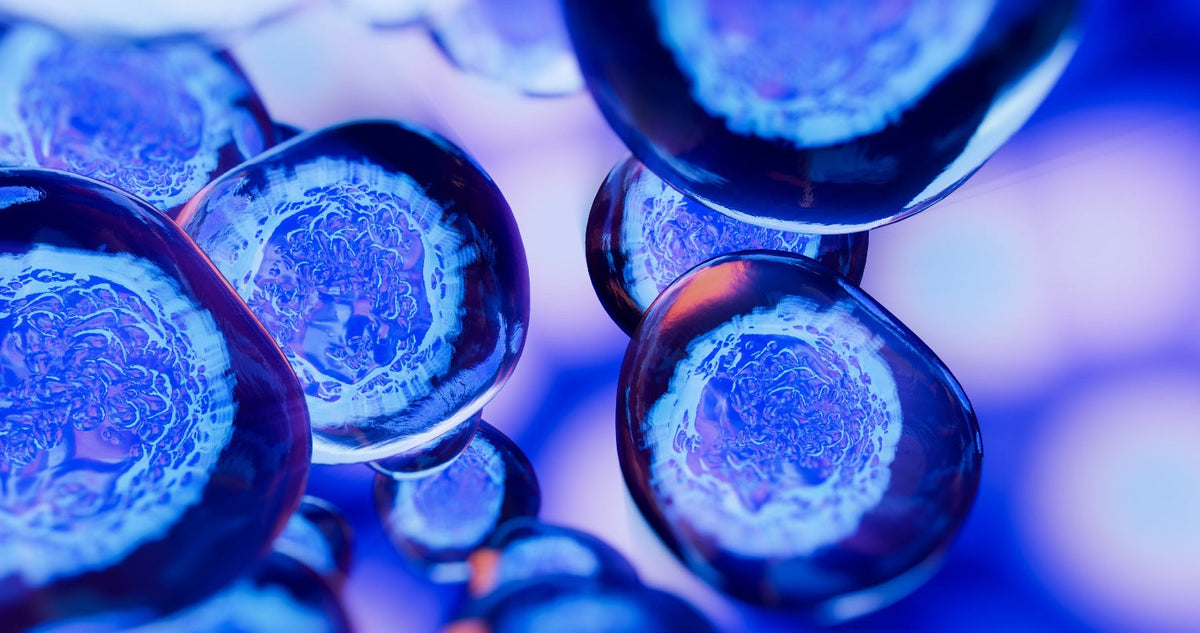
The Role of Stem Cell Activation in Muscle and Joint Recovery
|
|
Time to read 5 min
Written by: LifePharm Inc
|
|
Time to read 5 min
In the intricate dance of the human body, where every movement and action are a testament to its complex biological mechanisms, injuries to muscles and joints can disrupt our lives significantly. From athletes to the elderly, the quest for a swift and efficient recovery is universal. Enter stem cell activation - an approach that is transforming our understanding of healing and rehabilitation. With the remarkable potential to not only accelerate recovery times, but also enhance the body's natural repair processes, this can help many who have had injuries. Stem cell activation is a cutting-edge technique that activates the body's inherent stem cells to repair and rejuvenate injured tissues. Rather than just managing symptoms, this approach targets the root of the injury, enhancing the natural healing process.
According to Mayo Clinic, “Stem cells are a special type of cells that have two important properties. They are able to make more cells like themselves. That is, they self-renew. And they can become other cells that do different things in a process known as differentiation.” Also, Mayo Clinic states that stem cells can be directed to become specific cells, allowing them to regenerate and repair tissues in the human body that have been damaged or deteriorated due to diseases and this is known as regenerative medicine. This dual capability of self-renewal and differentiation makes stem cells invaluable in regenerative medicine.
According to MedlinePlus, “There are two main types of stem cells: embryonic stem cells and adult stem cells.” Mayo Clinic states that embryonic stem cells are derived from embryos that are in the range of 3 to 5 days old. Adult stem cells, according to Mayo Clinic, are present in small quantities in most adult tissues like the bone marrow and fat and have a more restricted capacity to differentiate into different cells of the human body. Both types of stem cells have unique roles in medical science.
According to Greenberg Regenerative Medicine, stem cell activators “...is a general term used to describe anything that activates stem cells. These can be your diet, supplements, or overall lifestyle choices. Stem cells are important because they are responsible for regenerating and repairing damaged tissue throughout your body.” This is different than stem cell therapy, which typically involves the transplantation of stem cells from a donor (either the patient themselves or another person) into the patient's body where they can replace damaged tissue, stimulate healing, or modulate the immune system. Stem cell activation is about targeting the root of the injury to enhance the natural healing process. This approach focuses more on enhancing the natural regenerative processes of the body rather than introducing new cells.
Following this explanation, it's important to recognize that joint and muscle pain or injury often arise from wear and tear, inflammation, or trauma. Stem cell activators, by promoting the body's innate healing mechanisms, can offer promising avenues for addressing these issues at their source. Outside of helping with joint and muscle discomfort, stem cell activation can help other parts of your body as well.
According to DVC Stem, some examples of stem cell activators are
Fibroblast Growth Factors (FGF) - This encompasses a group of growth factors that play a crucial role in several biological processes such as cell growth, wound healing, and embryonic development. This growth factor is especially critical in supporting the development and differentiation of neural stem cells.
Platelet-Derived Growth Factor (PDGF) - This is a critical protein that plays a key role in regulating cell growth and division. It is particularly essential for the development of mesenchymal stem cells, which have the capacity to differentiate into diverse cell types such as bone, cartilage, and fat cells.
Epidermal Growth Factor (EGF) - This is a protein that stimulates cell growth and differentiation by attaching to its receptor (which is EGFR). This protein is vital for the development of certain stem cells, such as those found in epidermal and neural stem cells.
Interleukin 6 (IL-6) - This is a type of protein called cytokine and is essential for the immune system's response.
Notch proteins - These form a group of receptors essential for cellular communication, influencing processes like cell differentiation, apoptosis and proliferation. These proteins are important because they are vital for the differentiation and maintenance of neural stem cells.

According to DVC Stem, while these factors do not directly trigger stem cell activity, they help establish a supportive environment that enhances stem cell health and encourages their proliferation and include:
Adequate sleep - Sleep serves as a crucial period for the body's repair and rejuvenation. It's during these hours that the body may produce an increased number of stem cells and optimize the performance of the ones already existing.
Stress management - Employing stress-management techniques like meditation, yoga, and deep breathing could significantly bolster the health and resilience of stem cells.
Intermittent Fasting - There has been some research that has suggested intermittent fasting might kickstart stem cell activity and facilitate cellular repair processes.
Regular exercise - Engaging in physical activity can boost the generation of specific stem cell varieties. Exercise can elevate the population of neural stem cells in the brain, which can potentially improve cognitive function and mood.
Healthy diet - Opting for a well-rounded diet abundant in fruits, vegetables, lean proteins, and whole grains can furnish the essential nutrients crucial for maintaining optimal stem cell health. Some foods stand out for their particularly beneficial properties. For example, blueberries boast high levels of antioxidants that may bolster brain health and facilitate neurogenesis.
Applying this to your daily life may help with stem cell health and your overall health will also be positively affected.

For those struggling with joint/muscle pain or injury, we recommend trying our latest product, the Cellnergy Wellness Power Cream. This latest addition to our Cellnergy Wellness lineup is a self-heating topical cream for treating and relieving achy joints. The cream contains a proprietary blend of bio-active growth factors including FGF-2 (FibroBlast Growth Factor-2) designed to reactivate dormant stem cells and platelet-derived growth factor and transforming growth factor beta-1 to help stimulate cell growth and repair to reduce inflammation and enhance cartilage matrix production.
The cream has our ThermalWave Technology, a unique formula of all natural ingredients including a sensory agent and Infrared Energy to soothe achy joints, stimulate blood flow, and promote cellular activity and healing.
Try out our Cellnergy Wellness Power Cream today.

We also recommend using our popular product LAMININE. LAMININE is a stem cell regeneration supplement that contains the proprietary blend of egg bioactive growth factors, marine proteins, and phyto proteins. Protein bio-factors such as FGF-2 are only available in this egg extract. These unique bio-factors play an important role in the proliferation, differentiation, and survival of cells in almost all organ systems by regulating the activity of multiple genes. LAMININE's bio-active growth factors are designed to reactivate dormant stem cells and platelet-derived growth factor and transforming growth factor beta-1 to help stimulate cell growth and repair.
Signing up with "Subscribe & save" means:
1. You will automatically be billed and shipped an order at your preferred frequency, starting at your initial order date
2. You will receive each subscription order for 25% off
Are you sure you would like to sign up?
Did anyone refer you to LifePharm?